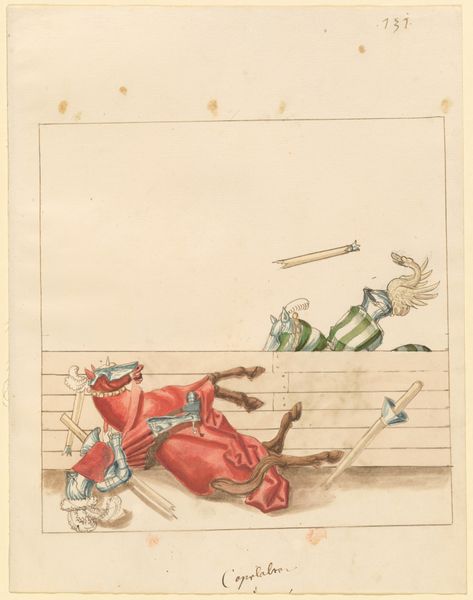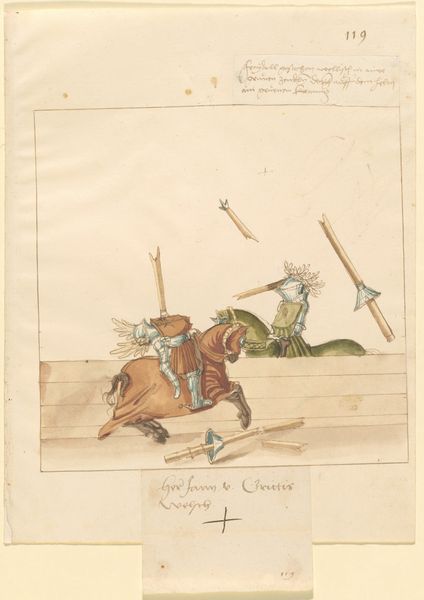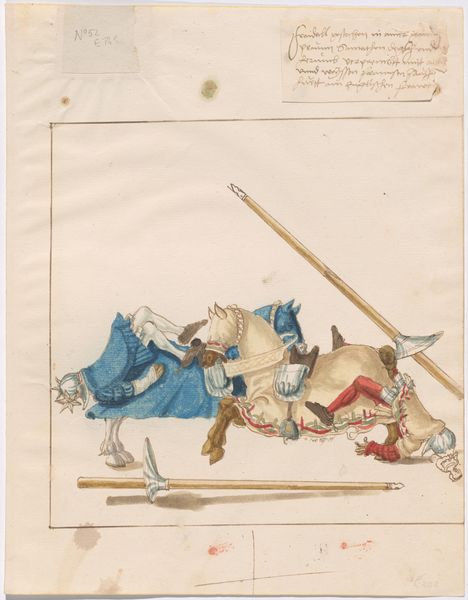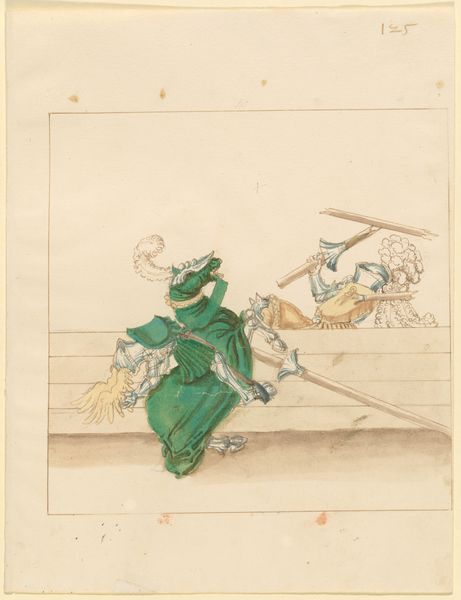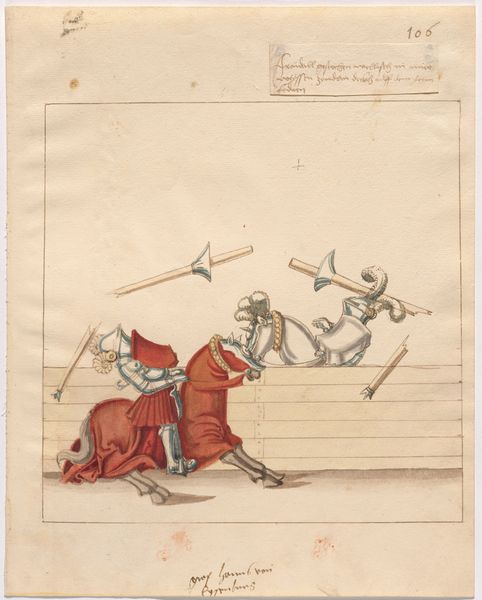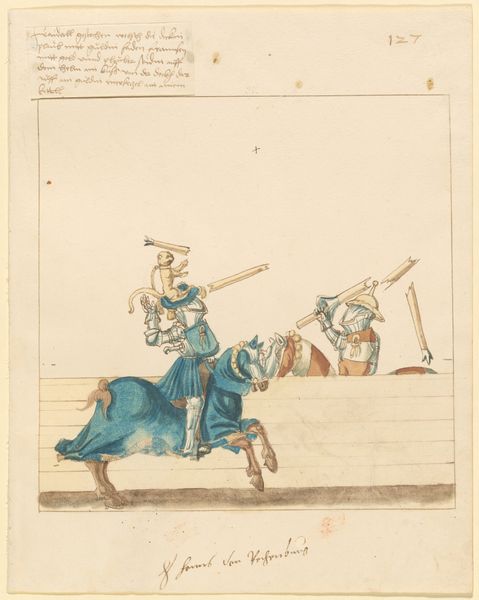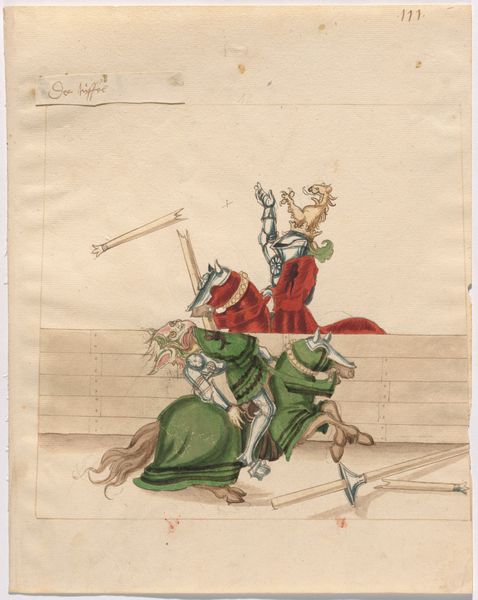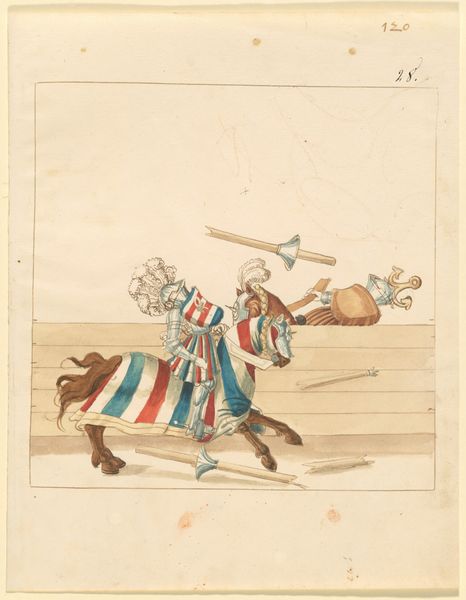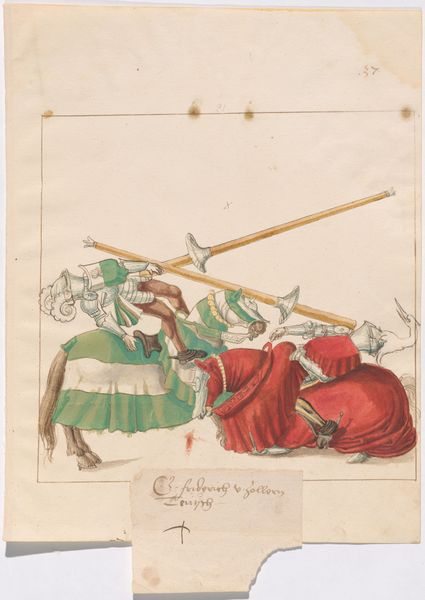
drawing, painting, watercolor
#
drawing
#
narrative-art
#
painting
#
figuration
#
11_renaissance
#
watercolor
#
history-painting
#
italian-renaissance
Dimensions: sheet: 34 × 26.1 cm (13 3/8 × 10 1/4 in.)
Copyright: National Gallery of Art: CC0 1.0
Editor: Here we have a piece called "Italian Joust of Peace," dating from around 1512 to 1515, created in watercolor. What strikes me most is the seemingly chaotic composition, yet the figures still appear quite elegant despite the scene. What do you see in this work? Curator: I see a moment suspended in time, rich with socio-political commentary. The broken lances scattered about immediately bring to mind the fragility of peace and the ever-present threat of violence, even amidst attempts at diplomacy. Consider the 'Joust of Peace' itself - a performance of concord. Yet, isn't it staged on the backs of hierarchical power structures and martial prowess? Editor: That's an interesting perspective. I was focusing on the aesthetic qualities, like the soft colors and detailed rendering of the clothing. Are you saying the beauty is a distraction? Curator: Not a distraction, but perhaps a veil. The Renaissance was a period of great artistic flourishing, yes, but also one marked by profound social inequality and conflict. By using delicate watercolors to depict a scene of potential violence, is the artist perhaps highlighting the deceptive nature of appearances? What narratives are concealed beneath this veneer of refinement? Editor: So you're suggesting the artwork isn’t just a depiction of a joust but a commentary on the social and political climate of the time? It almost feels like a critique. Curator: Precisely. It urges us to question what performative peace really entails, especially considering how gender and power operate within this setting. Editor: I never considered those layers before. Now I see how the artist is doing much more than simply representing a historical event. Thanks! Curator: My pleasure. This piece shows how even seemingly straightforward images can be incredibly complex when viewed through a critical lens.
Comments
No comments
Be the first to comment and join the conversation on the ultimate creative platform.

